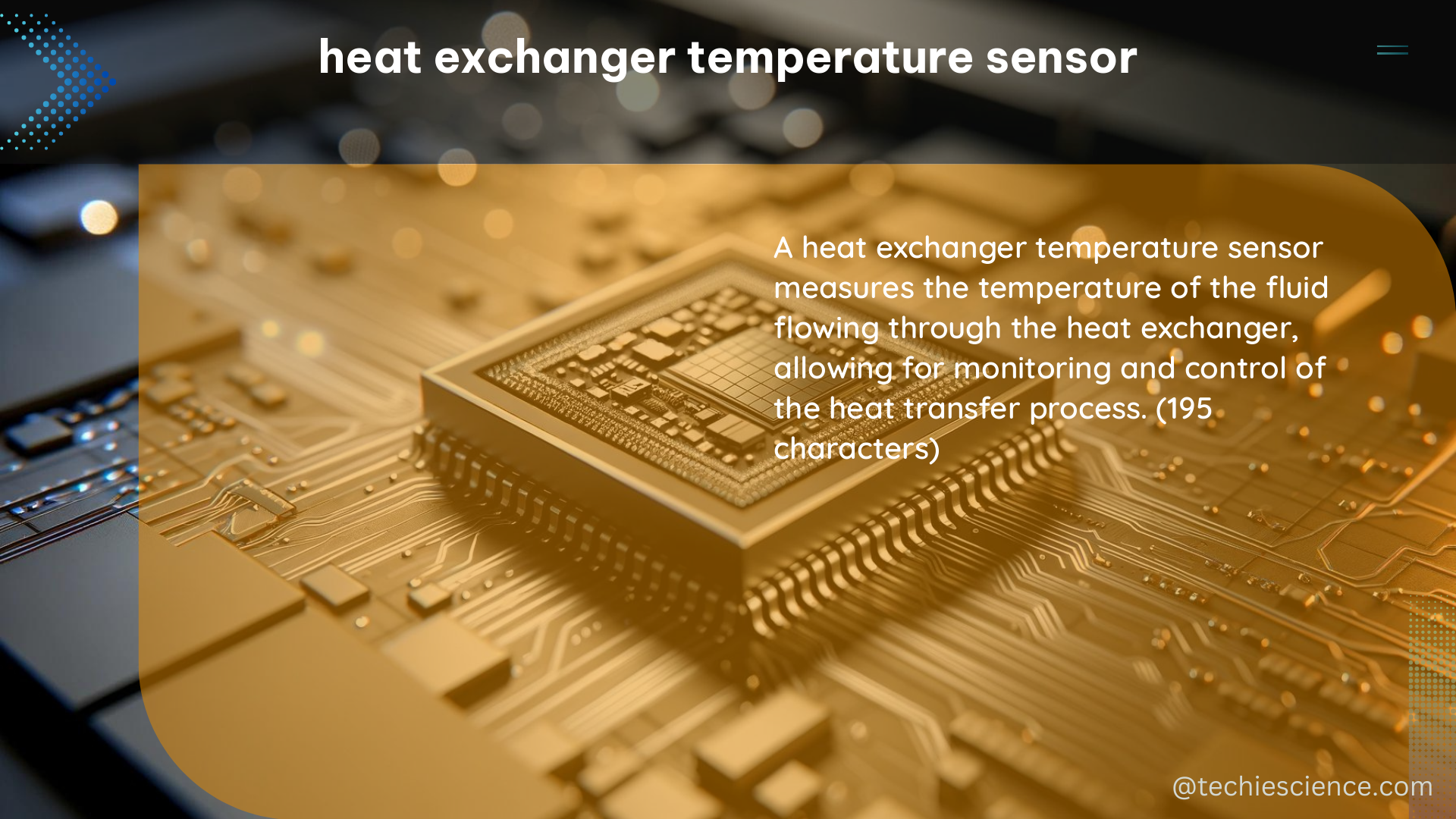Heat exchanger temperature sensors are crucial for monitoring and ensuring the performance of heat exchangers. The uncertainty in temperature measurements can significantly affect the overall heat load uncertainty, as demonstrated in a study where an 11.6% overall heat load uncertainty was computed for a sample water-to-water cooler using steady-state field data. The study also highlights the importance of considering uncertainty in temperature measurements even prior to taking data, and the need for careful consideration of measurement uncertainties in evaluating data from water-cooled exchangers in nuclear power plants.
Understanding Temperature Measurement Uncertainty
The uncertainty in temperature measurements can have a significant impact on the overall heat load uncertainty in heat exchangers. A study conducted by Tatara and Lupia (2011) found that an 11.6% overall heat load uncertainty was computed for a sample water-to-water cooler using steady-state field data. This highlights the importance of considering measurement uncertainties even before collecting data.
Factors Affecting Temperature Uncertainty
The choice of instrument type and quantity, error, and statistical variations all contribute to temperature uncertainty. Instruments and probes based on electrical effects, such as Resistance Temperature Detectors (RTDs), are most common for temperature measurement in heat exchangers.
Instrument Type and Quantity
The selection of the appropriate temperature measurement instrument is crucial. RTDs are widely used due to their accuracy, stability, and repeatability. The number of sensors employed can also impact the overall temperature uncertainty. Using multiple sensors can help reduce the impact of individual sensor errors and provide a more representative temperature measurement.
Instrument Error and Statistical Variations
Instrument error, such as calibration accuracy, linearity, and repeatability, can contribute to temperature uncertainty. Additionally, statistical variations in the temperature measurements, such as standard deviations and confidence levels, need to be considered.
Propagation of Error Method
A propagation-of-error method can be used to compute an uncertainty level for heat exchanger load. This method takes into account the effects of temperature parameters, such as standard deviations, confidence levels, and Student t-distribution values, on the overall heat load uncertainty.
Practical Considerations for Heat Exchanger Temperature Data Assessment

In power plant coolers, several factors need to be considered when assessing heat exchanger temperature data:
Instrument Sensor Accuracy
The accuracy of the temperature measurement instruments is crucial. Factors such as sensor calibration, linearity, and repeatability should be carefully evaluated to ensure reliable temperature data.
Number of Sensors and Data Sampling Intervals
The number of temperature sensors used and the data sampling intervals can impact the overall temperature uncertainty. Using multiple sensors and shorter sampling intervals can provide a more representative temperature profile and reduce the impact of individual sensor errors.
Statistical Confidence Level
Selecting a reasonable statistical confidence level is important when analyzing heat exchanger temperature data. This confidence level determines the level of certainty in the temperature measurements and the associated heat load calculations.
Centralized Statistical Approach
A centralized, practical statistical approach can be used to quantify the factors mentioned above and facilitate the use of the proposed methodology for heat exchanger temperature data assessment.
Conclusion
In summary, heat exchanger temperature sensors play a critical role in monitoring and ensuring the performance of heat exchangers. Understanding the factors that contribute to temperature measurement uncertainty, such as instrument type, quantity, error, and statistical variations, is essential for accurate heat load calculations. By considering instrument sensor accuracy, the number of sensors, data sampling intervals, and a reasonable statistical confidence level, power plant operators can effectively assess heat exchanger temperature data and optimize the performance of their systems.
References:
- Tatara, R. A., & Lupia, G. M. (2011). Assessing heat exchanger performance data using temperature measurement uncertainty. International Journal of Engineering, Science and Technology, 3(8), 1-12.
- QUANTItative scanning probe microscopy techniques for HEAT… (n.d.). Retrieved from https://cordis.europa.eu/project/id/604668/reporting/pl
- Bioanalytical sensors using the heat-transfer method HTM… (n.d.). Retrieved from https://www.ncbi.nlm.nih.gov/pmc/articles/PMC10690833/
- Internal Heat Exchanger Performance Quantification and… (2016). Retrieved from https://docs.lib.purdue.edu/cgi/viewcontent.cgi?article=2761&context=iracc
- Investigations of a heat exchanger using infrared thermography and… (n.d.). Retrieved from https://www.researchgate.net/publication/241100269_Investigations_of_a_heat_exchanger_using_infrared_thermography_and_artificial_neural_networks

The lambdageeks.com Core SME Team is a group of experienced subject matter experts from diverse scientific and technical fields including Physics, Chemistry, Technology,Electronics & Electrical Engineering, Automotive, Mechanical Engineering. Our team collaborates to create high-quality, well-researched articles on a wide range of science and technology topics for the lambdageeks.com website.
All Our Senior SME are having more than 7 Years of experience in the respective fields . They are either Working Industry Professionals or assocaited With different Universities. Refer Our Authors Page to get to know About our Core SMEs.